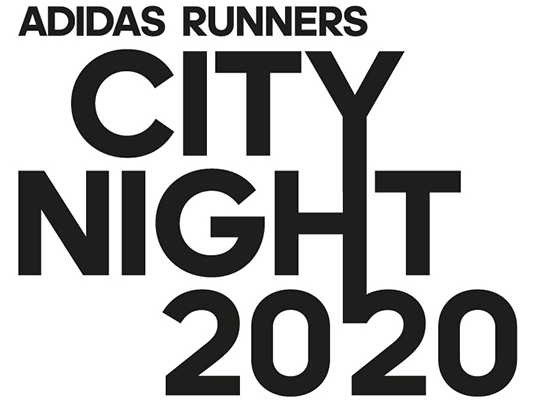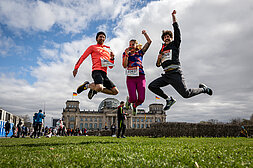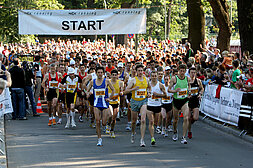Berlin Road Race - Generalprobe A route full of history
A few weeks before the BMW BERLIN-MARATHON, when the runners start out on the 10.5-kilometre course at the Berlin Road Race - Generalprobe, there is a reason they call it the "Berlin Dress Rehearsal". But the course is not only suitable for checking your fitness status, but it also has numerous (his)stories to tell along the way. So, let’s take you on a very special course presentation.
When you stand at the start on Schlossstrasse, you are on one of the most important shopping streets in Berlin. You may have already seen the changing rooms when you picked up your race documents at Forum Steglitz, which was recently redesigned.
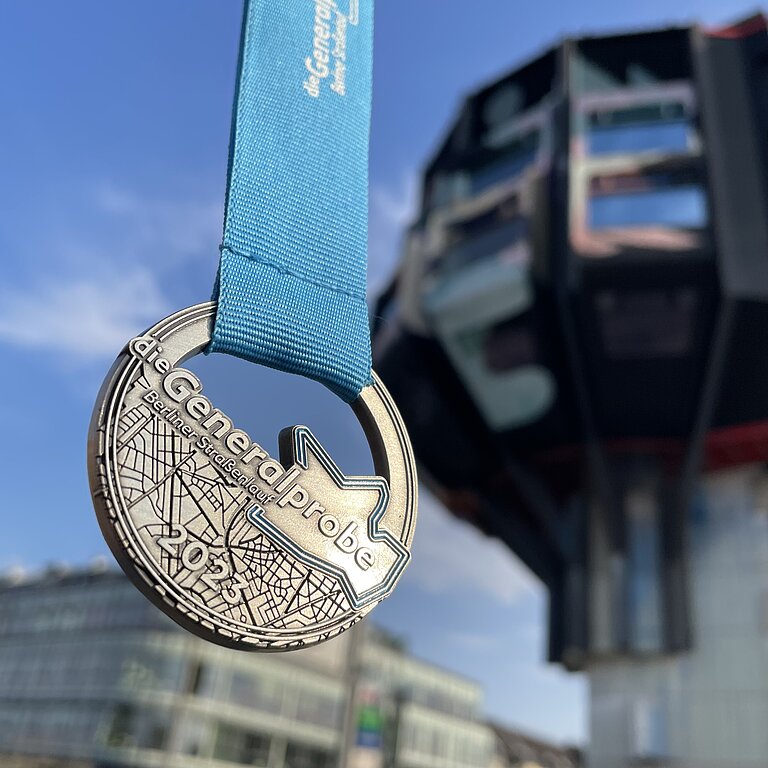
The Bierpinsel “beer brush” also earned its honors
The Sotheby's Bierpinsel “Beer Brush”
Once you have taken your first quick steps after the excitement of the start, it's worth taking a look up here to the right: Looking like a mushroom, a strange house rises almost 50 metres into the air. However, it has always been difficult to rent out and not even Sotheby's was able to auction it off. Recently, the house made it into a Netflix series, where it is supposed to house the LKA Berlin Criminal Investigation Division.
Berliners, who simply call the house the Bierpinsel, will take that with a bit of humour. But the route continues on down Schlossstrasse until it turns off to the right at a brick building. This was built as the town hall in 1898, when the district of Steglitz (where we are now) was an independent rural municipality.
Franz Kafka and the Kaiser (Emperor)
Turn right onto Grunewaldstrasse. The old Berlin apartment buildings from the 19th and early 20th centuries are still standing. And in one of them, house number 13, Franz Kafka spent his last winter in 1923/1924. He had come to Berlin because he had fallen in love with a young woman. Kafka liked Berlin, but his poor health with lung disease did not allow him much time, and he died the following summer. Grunewaldstrasse winds through a beautiful and rather green residential district and becomes Königin-Luise-Strasse.
There, on the left, you will spy a thatched farmhouse that is in fact nothing more than an underground station. The Dahlem Dorf station was built in 1912/1913, and it was Kaiser Wilhelm II himself who insisted on a building in the style of a north German manor house to match the then still very rural character of Dahlem.
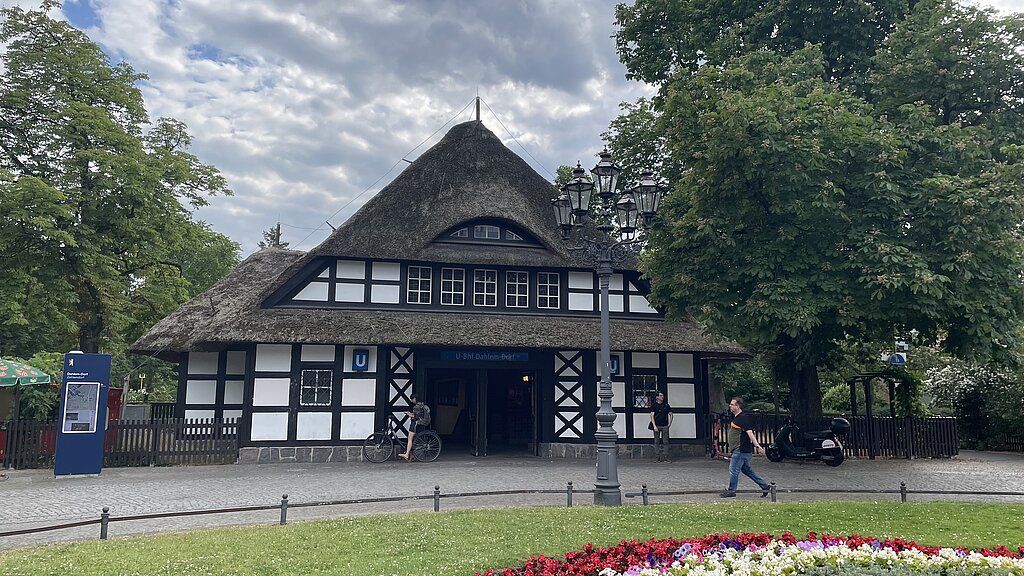
Thatched roofs are more of an exception in Berlin
Mr. Haffner and Mr. Einstein
Directly opposite the subway station is Domäne Dahlem, a historic country estate that today offers organic produce and has a museum dedicated to agriculture. Berliners once bought the famous Dahlem milk here, and the Domäne hosted parades of milk carriages. Speaking of Dahlem: not directly on our route, but not far from here, is Ehrenbergstrasse, where Albert Einstein lived and conducted his research for a short time in 1914. Years later, by chance, the historian Sebastian Haffner also found lodging here ("Notes on Hitler").
Rudi's resting place
Now we are already at kilometre 3 and make a right turn onto Pacelliallee. This is still a green residential area filled with villas that used to lie at the outskirts of the city. Right as you turn onto the avenue, you have a view of the Sankt Annen parish with its cemetery. The well-known student leader in the 1960s, Rudi Dutschke, is buried here. The representative of democratic socialism died from gunshot wounds in 1968.
Next to it, now to our left, is the former vicarage of Martin Niemöller, with whom Rudi Dutschke maintained contact - perhaps it is little known that Dutschke's socialism had a Christian foundation. Niemöller resisted the National Socialists with his Confessing Church and later became involved in the peace movement.
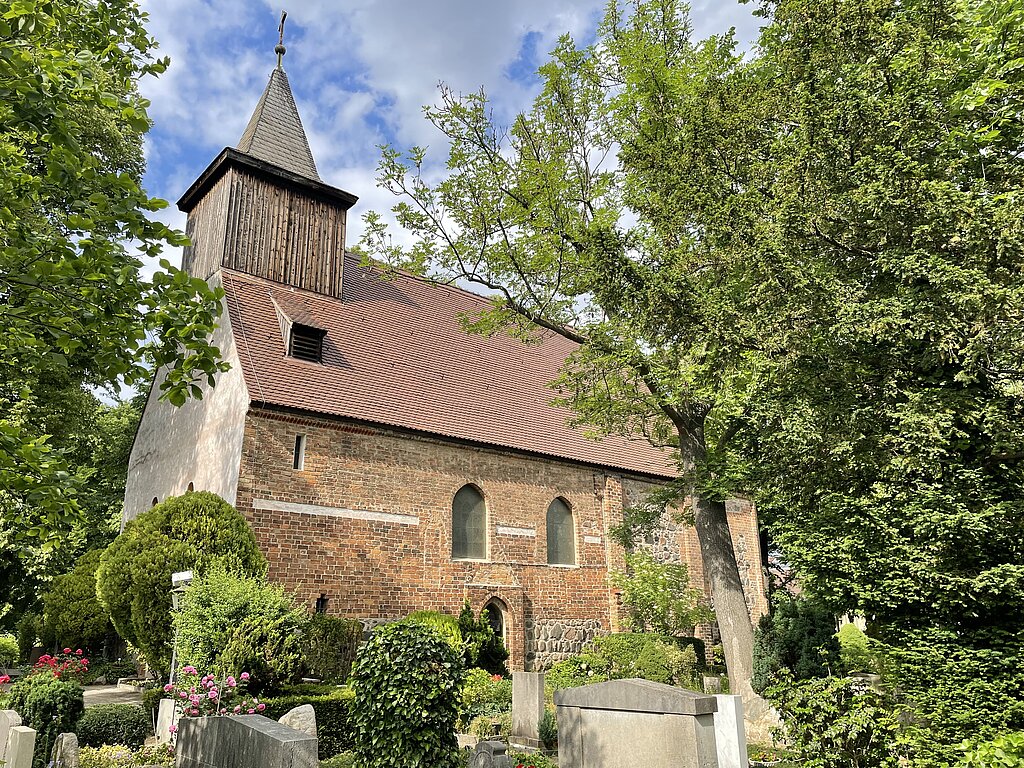
Rudi Dutschke rests in the St. Annen cemetery
Hans-Dietrich and a Wild Boar
Pacelliallee, lined with magnificent large trees, now leads the athletess further and further north. If you pay attention, you can make out the Stauss Villa on the right, which has a peculiar triangular façade facing the street – and in the middle there is a cute little tower housing the front door. Built for a banker of the same name in 1914, it was the seat of the American city commander for a long time after the Second World War, until Hans-Dietrich Genscher requisitioned it for the Foreign Office after reunification.
This brings us to kilometre 4, and the group of runners arrives at the Wilder Eber (Wild Boar Square) - a real hotspot at the BMW BERLIN-MARATHON. The course is said to be named after an actual boar that showed up in the beer garden "Zur Waldschänke" in 1885 and was then shot by the owner—who then renamed his pub.
Love adventures with a countess
Continue up Rheinbabenallee and then turn right into Hundekehlstrasse. From 1898 to 1900, the poet Rainer Maria Rilke lived here, though not in the building that exists today, as the dignified "Villa Waldfrieden" no longer exists.
It was here that he wrote the story, The Love and Death of Cornet Christopher Rilke, a poem that recounts the poet's ancestor as he marches against the Turks and experiences a fateful love affair with a countess. Today, one may briefly trace the genius of the poet and this strange tale before moving on to Breite Strasse.
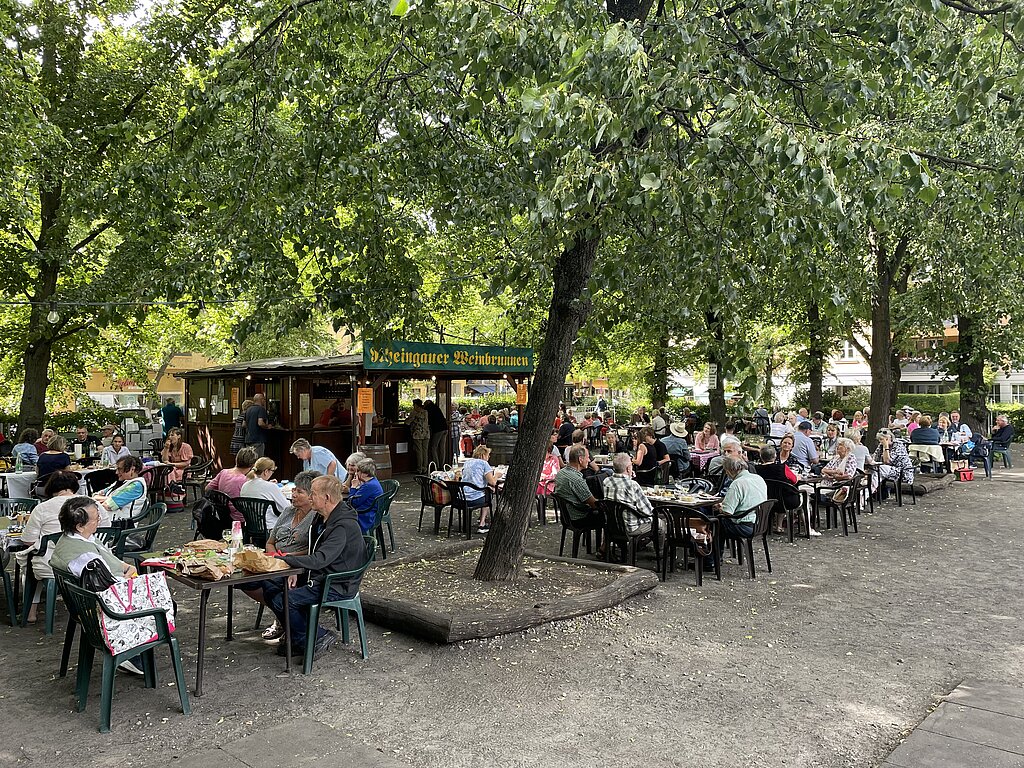
Wine drinking has a long tradition at Rüdesheimer Platz
A fountain full of wine
Moving along, you now come to Rüdesheimer Platz. In May, the Rheingau is present here ... with its wines. The Rheingau Wine Fountain, as the festival is called, provides the wine, while you can bring your own food. Not far away is another curiosity that should be mentioned, even if it is not directly on the route: The "Snake". This is a high-rise building with a road that runs through it. Completed in 1980 and set on shock absorbers (to absorb the vibrations from traffic), the building looks a bit like a large ship.
The architecture was, of course, controversial. The governing mayor Richard von Weizsäcker once stated, "If the devil wants to do something evil to this city, he'll build something like the 'Snake' again." Today the Snake is a historically-listed building. Once you're out of the Rheingau district, you've already made it to kilometre 9. At Friedrich-Wilhelm-Platz we’ll take another right turn, and then we're already on the home stretch. Did you catch everything? If not, there is still a second lap for those running the half marathon.






